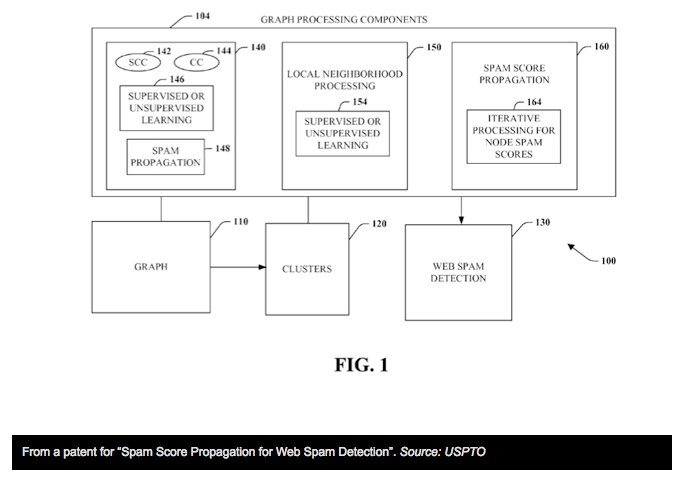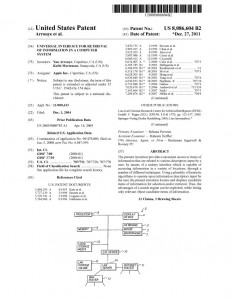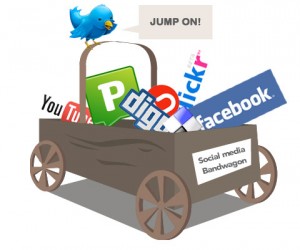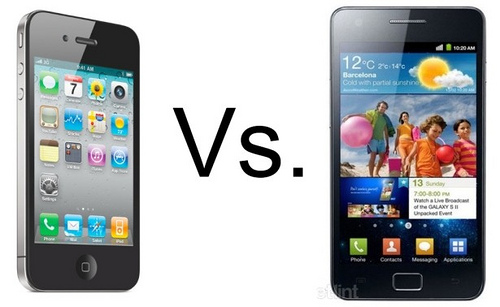As you may know, there are some significant changes being made to U.S. patent law. As part of those changes, the Patent and Trademark Office must provide guidance to the examiners on how to apply the new law. One change is in the grace period for third party disclosures made between the filing date of an application and an inventor’s disclosure made up to one year earlier.
I read the guidelines and disagree with the Office’s position. Thankfully, under the Administrative Procedure Act, there is a comment period during which members of the public can submit their views. While several people have submitted comments critical of the guidelines, mine are focused on issues of statutory construction and I also provide an alternative interpretation.
You can review previously submitted comments at the USPTO website. I also have a PDF version of these comments available for download.
The following are my comments on the Examination Guidelines for Implementing the First Inventor to File Provisions of the Leahy-Smith America Invents Act that are being submitted the the USPTO today, October 26, 2012:
Dear Sir:
I am a registered Patent Attorney (Reg. No. 56,668) and have been practicing exclusively in intellectual property for the past eight years. My practice is almost exclusive to patents, including prosecution, counseling, due diligence, and licensing. I am, however, writing only as an interested member of the public and not as an employee of my law firm. The views expressed in these comments are my own views that I hold at this time and should not be attributed to any client or other practitioner in my firm.
I am grateful to the Office for extending the time to present comments on these Examination Guidelines and am pleased to have the opportunity to have these comments considered. Having reviewed many of the already submitted and well reasoned comments, I shall limit mine to the provision where I do not feel my views have been adequately expressed by others. In particular, these comments are directed towards the portion of the Examination Guidelines related to the Office’s interpretation of the “grace period” established in 35 U.S.C. 102 as amended by the AIA.
It is my view that, at least in part, the Examination Guidelines are based on a faulty interpretation of the statutory text, and that a proper interpretation of the statute would yield a very different application of the “Grace Period.”
I. The Office’s Interpretation of the “Grace Period” Established by 35 U.S.C. 102 as amended by the AIA and Expressed int the Examination Guidlines
The portion of the Examination Guidelines describing the Office’s interpretation reads as follows:
The exception in 35 U.S.C. 102(b)(1)(B) applies if the ‘‘‘subject matter’ disclosed [in the prior art disclosure] had, before such [prior art] disclosure, been publicly disclosed by the inventor or a joint inventor * * *.’’ 41 Thus, the exception in 35 U.S.C. 102(b)(1)(B) requires that the subject matter in the prior disclosure being relied upon under 35 U.S.C. 102(a) be the same ‘‘subject matter’’ as the subject matter publicly disclosed by the inventor before such prior art disclosure for the exception in 35 U.S.C. 102(b)(1)(B) to apply. Even if the only differences between the subject matter in the prior art disclosure that is relied upon under 35 U.S.C. 102(a) and the subject matter publicly disclosed by the inventor before such prior art disclosure are mere insubstantial changes, or only trivial or obvious variations, the exception under 35 U.S.C. 102(b)(1)(B) does not apply.�1
The relevant portion of 35 U.S.C. 102 as amended by the AIA reads:
(b) Exceptions-
1. DISCLOSURES MADE 1 YEAR OR LESS BEFORE THE EFFECTIVE FILING DATE OF THE CLAIMED INVENTION- A disclosure made 1 year or less before the effective filing date of a claimed invention shall not be prior art to the claimed invention under subsection (a)(1) if—
A. the disclosure was made by the inventor or joint inventor or by another who obtained the subject matter disclosed directly or indirectly from the inventor or a joint inventor; or
B. the subject matter disclosed had, before such disclosure, been publicly disclosed by the inventor or a joint inventor or another who obtained the subject matter disclosed directly or indirectly from the inventor or a joint inventor.2
The interpretation advanced by the Office in these Guidelines would result in the anticipation of a claimed invention by a disclosure made by a third party, subsequent to a disclosure by the inventor or joint inventor or by another who obtained the subject matter disclosed directly or indirectly from the inventor or a joint inventor, so long as the intervening disclosure includes de minimis departures from the inventor’s disclosure.3 Additionally, because minor variations between the prior disclosure by an inventor and a later third party disclosure would render the Grace Period exception inapplicable, it is difficult to foresee a situation where an obviousness rejection of claims could be traversed by application of the exception provided in the statute.
To reach this interpretation, the statutory term “subject matter disclosed [by another]”4 used in 102(b)(1)(B) must be taken to mean that this third party disclosure is, for all intents and purposes, identical to that “disclosed by the inventor….”
II. An Alternative Interpretation
An alternative interpretation to that advanced in the Examination Guidelines would be one in which the statutory term “subject matter disclosed” is provided a meaning that is different from one that requires identity with the inventor’s prior disclosure. Such a statutory interpretation could, for example, be that the “subject matter disclosed” means “the nature or gist of the disclosure.”5 Such an interpretation takes a broader view of the statutory term “subject matter disclosed,” and is more consistent with the AIA than the interpretation expressed by the Examination Guidelines.
Under this interpretation, any intervening reference that anticipates or renders obvious a claimed invention would not qualify as prior art, even if the disclosure cited includes obvious variations of the claimed invention.
III. Reasons for Adopting a Broader View of the Term “Subject Matter Disclosed”
There are several reasons why a broader view of the term “subject matter disclosed” is appropriate, many of which have been addressed adequately by other commentors. In addition to those, there are two that I wish to address in these comments. First, the principals of statutory construction suggest that the statute is more amenable to a broader view than the interpretation expressed in the Examination Guidelines. Secondly, there are several situations in which the interpretation expressed in the Examination Guidelines would result in perverse results.6
A. Statutory Construction of Section 102
1. Plain Meaning
The interpretation expressed in the Examination Guidelines is one that would have “subject matter disclosed” mean that the third party disclosure is identical to that “disclosed by the inventor….” However, such a meaning could have been made very clear by use of other language and is inconsistent with the plain and common meaning of “subject matter.”
I note that other commentors have taken an opposing view. For example, one commentor has said in supporting the Office’s position:
In 102(b)(1)(A) the statute says that “the subject matter disclosed” by the inventor cannot be used against the inventor. In 102(b)(1)(A) the statute says that “the subject matter disclosed” by the inventor cannot be used against the inventor if disclosed by a third party who obtained “the subject matter disclosed” from the inventor, either directly or indirectly. Therefore, it is eminently reasonable for the USPTO to say that for subsequent disclosures after a disclosure of the inventor to be excluded as prior art they must be the same as the disclosure of the inventor with even trivial differences enough to prevent application of the exclusion.7
This argument, however, is circular. In essence, the argument is that “subject matter disclosed” means “subject matter disclosed” and since the drafter of the legislation used the same words they must mean the same thing. However, these instances of “subject matter” relate to different disclosures: namely the initial inventor’s disclosure and the intervening third party disclosure. This argument also fails to address the underlying question: what does “subject matter disclosed” mean. I will concede that once properly interpreted, the interpretation should be consistent throughout the statute. However, the crux is whether “subject matter disclosed” is properly interpreted to mean an identity between disclosures, or if a boarder view is appropriate.
“Subject matter” is not used to describe the exact expression of a concept or idea. Rather, the “subject matter” of a disclosure is the idea or concepts described. An analogy to another area of intellectual property law is the idea/expression dichotomy of copyright. In that context, the subject matter of a work would be the non-copyrightable idea, not the expression thereof. Similarly, the subject matter of a disclosure would be the ideas, concepts, limitations, and elements described by the disclosure, and not the language in which the author of the disclosure chose to express them. Another area where the term “subject matter” is used consistently with my proposed broader view is in current 35 U.S.C. 103(c) where the term is clearly used with a meaning broader than that adopted by the Office in the Examination Guidelines.8
Accordingly, the plain meaning of “subject matter disclosed” is more amenable to a broad view than to the view expressed in the Examination Guidelines.
2. Each Statutory Provision Should be Interpreted to Have Effect
Application of the interpretation expressed in the Examination Guidelines would render the Grace Period created by section 102(b)(1)(B) without any practical effect. If the only third party disclosures that can be obviated by showing prior publication by the inventor are those in which there are not even mere insubstantial changes, or only trivial or obvious variations between the cited art and the prior disclosure, 102(b)(1)(B) has no purpose or effect.
The odds that an independently developed, third party disclosure would not include, at the very least, “insubstantial changes” are infinitesimal. Any such disclosure would almost certainly have been made by one “who obtained the subject matter disclosed directly or indirectly from the inventor or a joint inventor” and thus be eliminated as prior art under section 102(b)(1)(A). Accordingly no third party disclosures would be excluded as prior art by section 102(b)(1)(B), and the interpretation expressed in the Examination Guidelines would effectively read this subsection out of the statute.
B. The Interpretation of “Subject Matter Disclosed” Expressed in the Examination Guidelines Would Lead to Perverse Results
Apart from the already discussed result that section 102(b)(1)(B) would be read out of the statute, there are other peculiar results from application of the interpretation expressed in the Examination Guidelines.
For example, the Office’s interpretation produces the odd result that a reference that is less like the inventor’s prior disclosure has a greater preclusive effect on patentability than a reference that is identical to (even if developed independently from) the disclosure of the inventor. This is because an identical disclosure that would otherwise anticipate a claimed invention would not qualify as prior art, while a variated disclosure that renders the claimed invention obvious would be prior art. In effect, there would be no Grace Period except in regards to intervening publications that are verbatim reproductions of the inventor’s disclosure.
IV. Conclusion
The Examination Guidelines rely on a faulty interpretation of the term “subject matter disclosed.” A proper interpretation of the statute leads to a broader view of “subject matter” and is consistent with the rest of the statute. This broader view also avoids peculiar results that are contrary to what would be expected such as the effective elimination of section 102(b)(1)(B) from the statute. Such results are contrary to the structure and language of the statute and should be avoided by adopting an interpretation that is in harmony with the plain meaning of the statute and does not deprive section 102(b)(1)(B) of meaning.
With this broader (and more appropriate) view of “subject matter disclosed” in mind, the Examination Guidelines should be revised. In particular, I believe the statute compels the result that intervening references that would otherwise anticipate or, by themselves or in combination with others, render a claimed invention obvious are not prior art under 35 U.S.C. 102 as amended by the AIA.
Again, I wish to thank the Office for the opportunity to provide these comments. I also want commend the Office on the preparation and publication of several comprehensive rule packets for implementation of the AIA in a relatively short period of time.
Regards,
Sean P. Connolly
Endnotes:
1 Request for Comments, 77 Fed. Reg. at 43767, col. 2.�
2 35 U.S.C. 102, as amended by the America Invents Act, Public Law 112-29 sec. 3.�
3 For purposes of brevity, I will refer to initial disclosures by an inventor, joint inventor, or by another who obtained the subject matter disclosed directly or indirectly from the inventor or a joint inventor, as an “inventor’s disclosure.”�
4 The restriction “by another” is inferred from Section 102 because disclosures by an inventor or derived from the inventive entity are not prior art under section 102(b)(1)(A).�
5 This is not to say that disclosing “nature or gist” of an invention would be sufficient to antedate a reference. It may well be necessary to show satisfaction of the enablement and other requirements within the prior disclosure by the inventor in order to obviate an intervening reference, but that is not a question that need to be addressed here. Rather, any interpretation of “subject matter of the disclosure” that allows for reasonable variation from the intervening disclosure could be suitable for purposes of these comments.�
6 While I often take a dim view of the effectiveness of using legislative history to interpret a statute, such arguments have been reasonably made by other commentors and I shall refrain from making such arguments here.�
7 Comments of Eugene R. Quinn, Jr., Submitted October 3, 2012, at 4. Available at http://www.uspto.gov/patents/law/comments/e-quinn_20121003.pdf�
8 “Subject matter developed by another person, which qualifies as prior art only under one or more of subsections (e), (f), and (g) of section 102 of this title, shall not preclude patentability under this section where the subject matter and the claimed invention were, at the time the claimed invention was made, owned by the same person or subject to an obligation of assignment to the same person.” 35 U.S.C. 103(c)(1). An interpretation of “subject matter” that means identity between disclosures would be nonsensical in the context of section 103 which deals with obviousness.
 The Supreme Court has granted Certiorari in FTC v. Watson Pharmaceuticals. In this case, a brand name drug manufacturer paid a generic to stay out of the market in order to settle a patent infringement litigation. The question presented is:
The Supreme Court has granted Certiorari in FTC v. Watson Pharmaceuticals. In this case, a brand name drug manufacturer paid a generic to stay out of the market in order to settle a patent infringement litigation. The question presented is:
